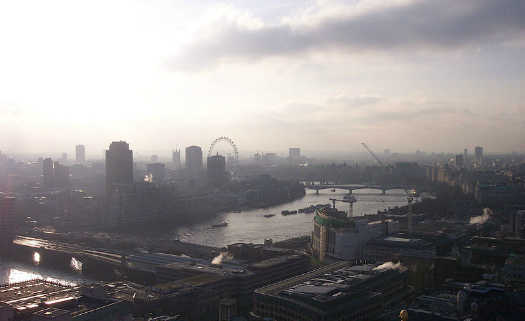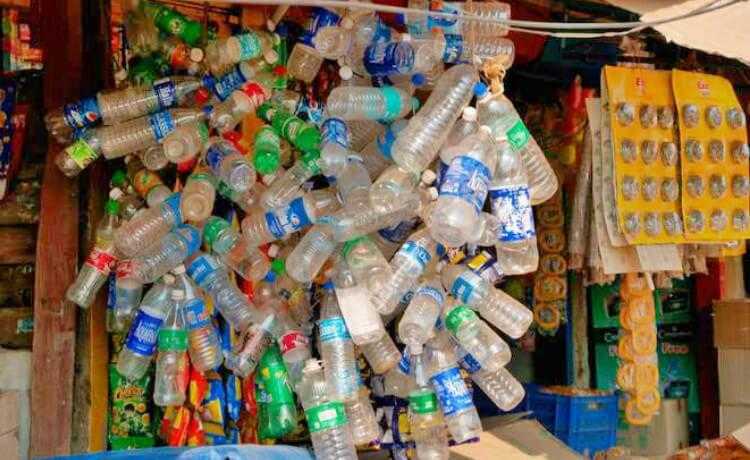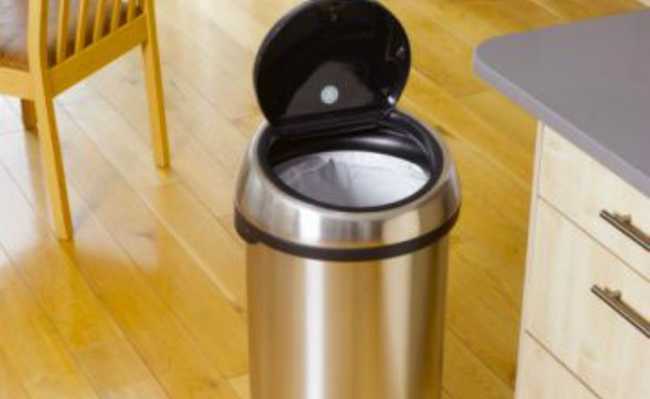Main consequences of air pollution
Air pollution is responsible for more deaths than many other risk factors, including malnutrition, alcohol use and physical inactivity.

Edited and resized image by Mitsuo Hirata, is available on Unsplash
Air pollution, also called air pollution, is one of the main problems facing humanity.
It may sound incredible, but air pollution was already present in Ancient Rome, when people burned wood, for example. However, the Industrial Revolution dramatically increased the human impact on air quality, as the intensity of coal combustion increased dramatically in the 19th century, particularly in Great Britain. The burning of coal dumped tons of air pollution, causing damage to the population, who suffered from respiratory diseases, responsible for thousands of deaths at the time.
Among the remarkable episodes that resulted from air pollution, the situation in England in the 1950s stands out. In 1952, due to particulate pollution and sulfur compounds released by industries in the burning of coal, in addition to bad weather conditions that contributed to the non-dispersion of this pollution, around four thousand people died in London from respiratory problems within a week. In the months following this event, which was known as big smoke (Big smoke, in free translation), more than 8,000 people died and about 100,000 others became sick.
This global problem is related to a number of consequences. Air pollution is responsible for one in seven new cases of diabetes, it affects all the organs of the body, reduces life expectancy, among other problems. Check out:
Consequences of air pollution
Generated a global health emergency
Air pollution is a global public health emergency as it threatens everyone from unborn babies to children walking to school to women cooking over open fires.
- Wood-fired pizzerias contribute to air pollution
- What is air pollution? Know causes and types
On the street and indoors, the sources of air pollution can be very different, but their effects are just as deadly: asthma, other respiratory illnesses, and heart disease are among the adverse health effects known to be caused by polluted air.
- Discover plants that purify the air
According to the World Health Organization (WHO), each year about 7 million premature deaths are attributable to air pollution – an impressive 800 people every hour or 13 every minute. Overall, air pollution is responsible for more deaths than many other risk factors, including malnutrition, alcohol use and physical inactivity.
Children are more vulnerable
Globally, 93% of all children breathe air that contains higher concentrations of pollutants than the WHO considers safe for human health. As a result, 600,000 children die each year from air pollution. As if that weren't enough, exposure to dirty air also impairs brain development, leading to cognitive and motor impairments, while at the same time putting children at greater risk for chronic illnesses later in life.
Air pollution in the home environment is particularly harmful to women and children due to their traditional gender roles in many cultures. About 60% of air pollution-related household deaths in the world occur among women and children, and more than half of all pneumonia deaths in children under the age of 5 can be attributed to indoor air pollution.
It is related to social inequality
Air pollution strikes at the heart of social justice and global inequality, disproportionately affecting the poor.
- What is climate gentrification?
In homes, air pollution mainly comes from fuels and high-emission heating and cooking systems. Clean fuels and cooking and heating technologies are out of reach for low-income households, so polluting alternatives are the norm.
About 3 billion people depend on burning solid fuels or kerosene to meet household energy needs, and 3.8 million of them will die each year from exposure to these pollutants. Lack of awareness of the risks associated with breathing polluted air also contributes to the problem, as well as the cost and difficulty of accessing healthcare.
Overcrowded cities and suburbs with heavy vehicular traffic are hot spots for air pollution. According to WHO, 97% of cities in low- and middle-income countries with more than 100,000 inhabitants do not reach the minimum levels of air quality. About 4 million of the estimated 7 million people who die from air pollution-related illnesses each year live in the Asia-Pacific region.
In high-income countries, 29% of cities fall short of the organization's guidelines. But in these countries, too, the poorest communities are often the most exposed – power plants, factories, incinerators and busy roads are often located in or near poor suburban communities.
The cheaper the fuels, the higher the costs
When people get sick, the whole community suffers. Sick people need medical care and medicine, children stop going to school and working adults miss their days, either as a result of their poor health or to care for a loved one. According to the World Bank, air pollution costs the global economy more than $5 trillion a year in welfare costs and $225 billion in lost income.
A 2016 study by the Organization for Economic Cooperation and Development (OECD) predicts that, if the situation remains unchanged, by 2060 the annual global welfare costs of premature deaths from outdoor air pollution would be 18 trillion to 25 trillion of dollars, with the costs of pain and suffering caused by illnesses estimated at about 2.2 trillion dollars.
There are other, less direct costs, which, however, affect us globally. Ground-level ozone is expected to reduce staple crop yields by 26% by 2030, creating food security and nutrition challenges. Air pollution also degrades materials and coatings, shortening their useful life and incurring cleaning, repair and replacement costs.
The sixth UN Global Outlook on the Environment estimates that climate mitigation actions to achieve the Paris Agreement targets would cost around 22 trillion dollars. Meanwhile, by reducing air pollution, we could save 54 trillion dollars in combined health benefits. The math is clear: Acting now against air pollution means saving $32 trillion.
The right to a healthy environment has constitutional status – the strongest form of legal protection available – in more than 100 countries. At least 155 States are legally obligated, through treaties, constitutions and legislation, to respect, protect and fulfill the right to a healthy environment.
The right to clean air is also embedded in the Universal Declaration of Human Rights (UDHR) and the International Covenant on Economic, Social and Cultural Rights, and fully enshrined in the Sustainable Development Goals (SDGs) – the global blueprint for peace and prosperity .
Find out what you can do to involve your business, school and family. Call your government to enforce the WHO guidelines for the environmental quality of indoor and outdoor air. Remember, clean air is a right.










